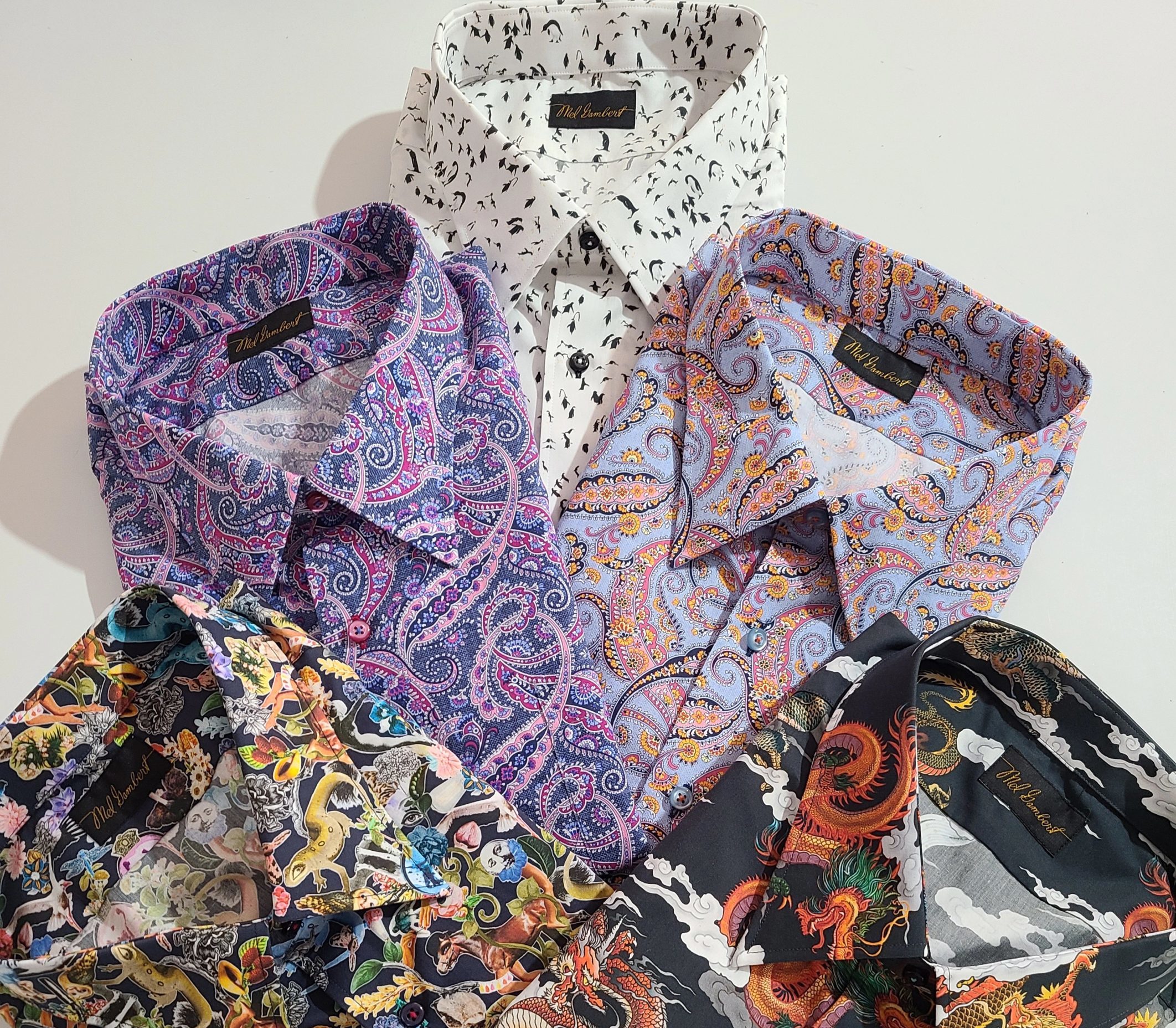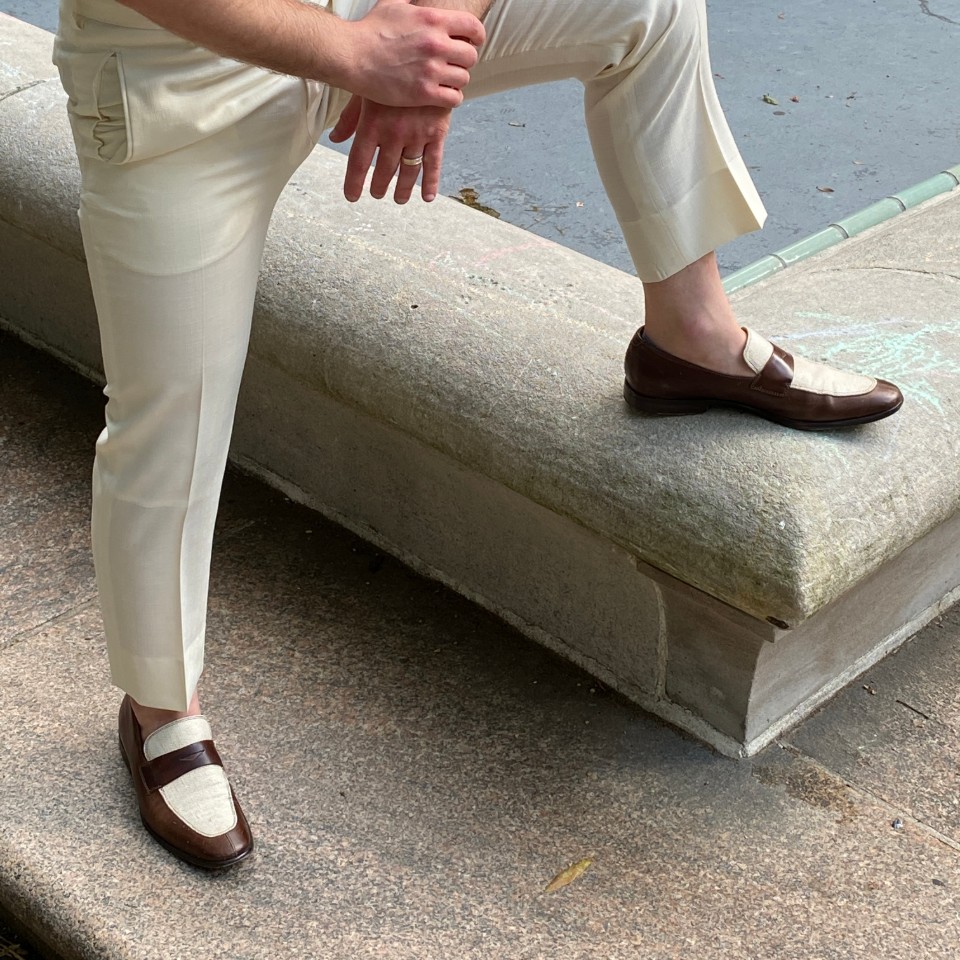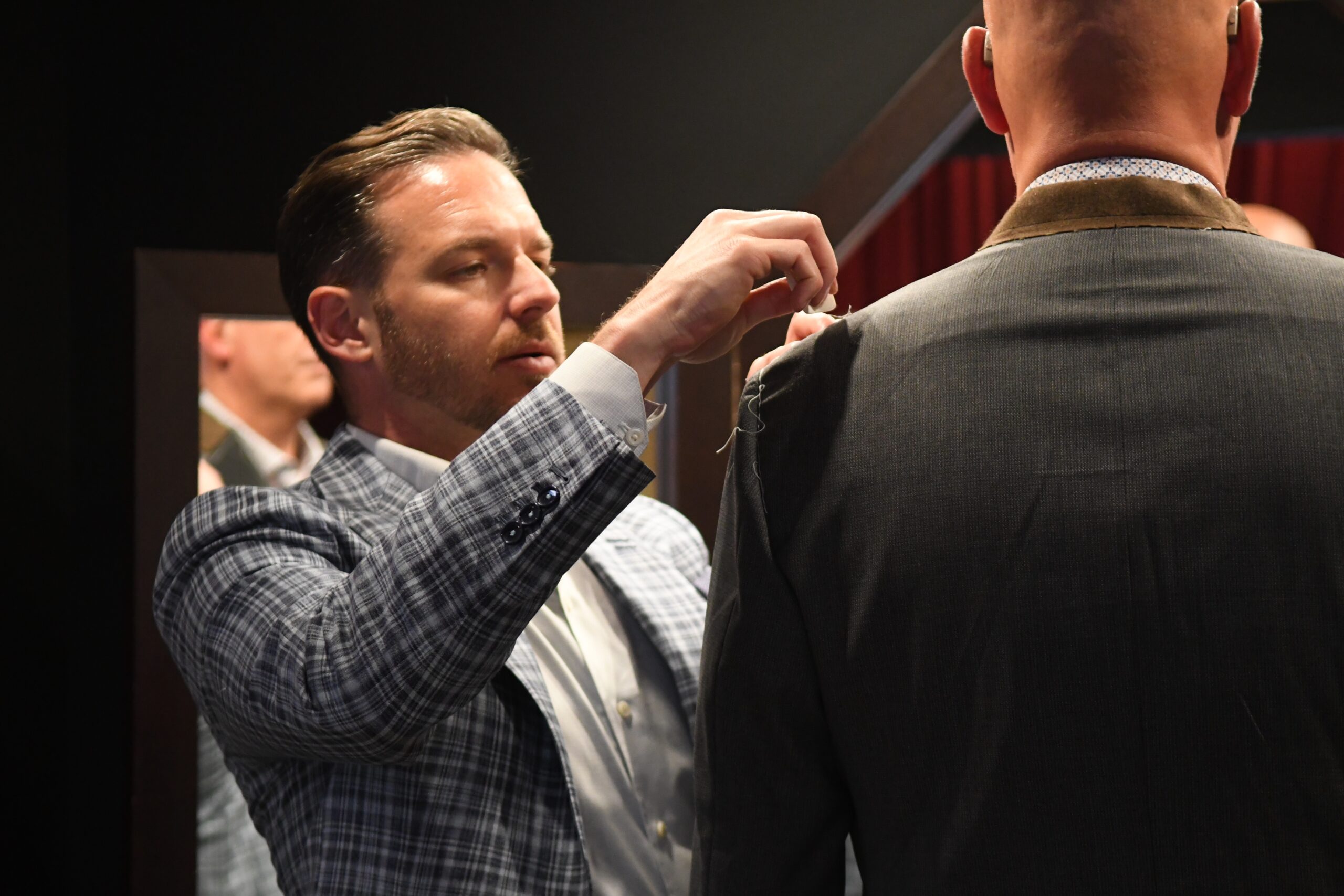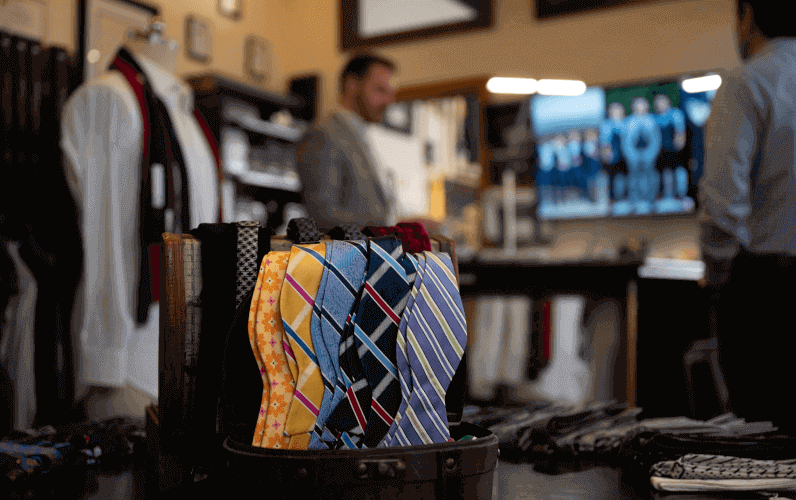If you think of a complete outfit as a framed piece of art, the suit would be your frame, the shirt would be your canvas, and the accessories are the artwork. Your shirt is in most people’s direct line of sight and borders the face, so it gets a lot of attention. In terms of comfort, the material of a dress shirt is arguably more important than that of a suit. After all, it’s making contact with your skin. A suit jacket, on the other hand, only touches the shirt it covers.
Shirts are important. There are many details to consider when designing a custom shirt. The fabric of a shirt – a complex topic in its own right – is merely its starting point. Here are three key components of shirts that warrant attention: collars, cuffs, and styling.
Collars
Why is a shirt collar so important?
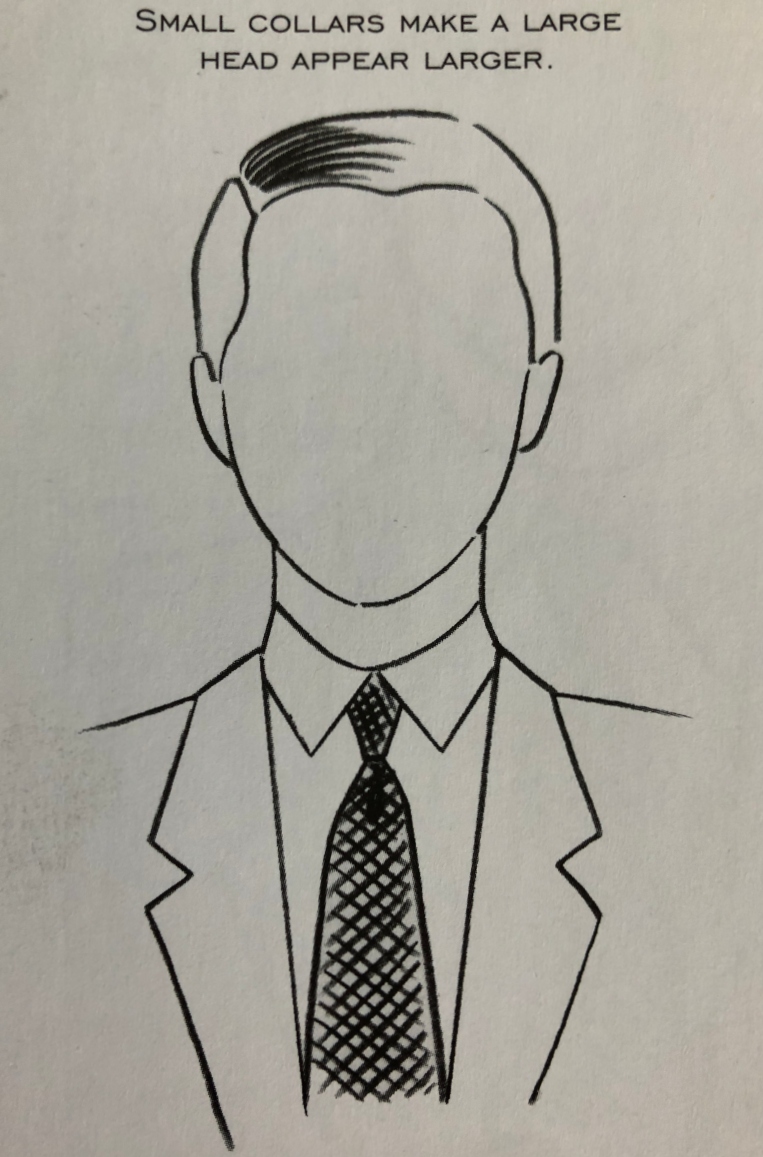 Short answer: it directly borders your face, and your face is the most important part of any outfit you’ll ever wear. Think about your face as a picture and your shirt collar as the frame. You wouldn’t put a 5×7 photo in an 8×10 frame, or even worse, the other way around, would you? Your face is your most expressive body part, and other humans look at it when deciphering the messages you convey. As such, it behooves you to pay a lot of attention to that area.
Short answer: it directly borders your face, and your face is the most important part of any outfit you’ll ever wear. Think about your face as a picture and your shirt collar as the frame. You wouldn’t put a 5×7 photo in an 8×10 frame, or even worse, the other way around, would you? Your face is your most expressive body part, and other humans look at it when deciphering the messages you convey. As such, it behooves you to pay a lot of attention to that area.
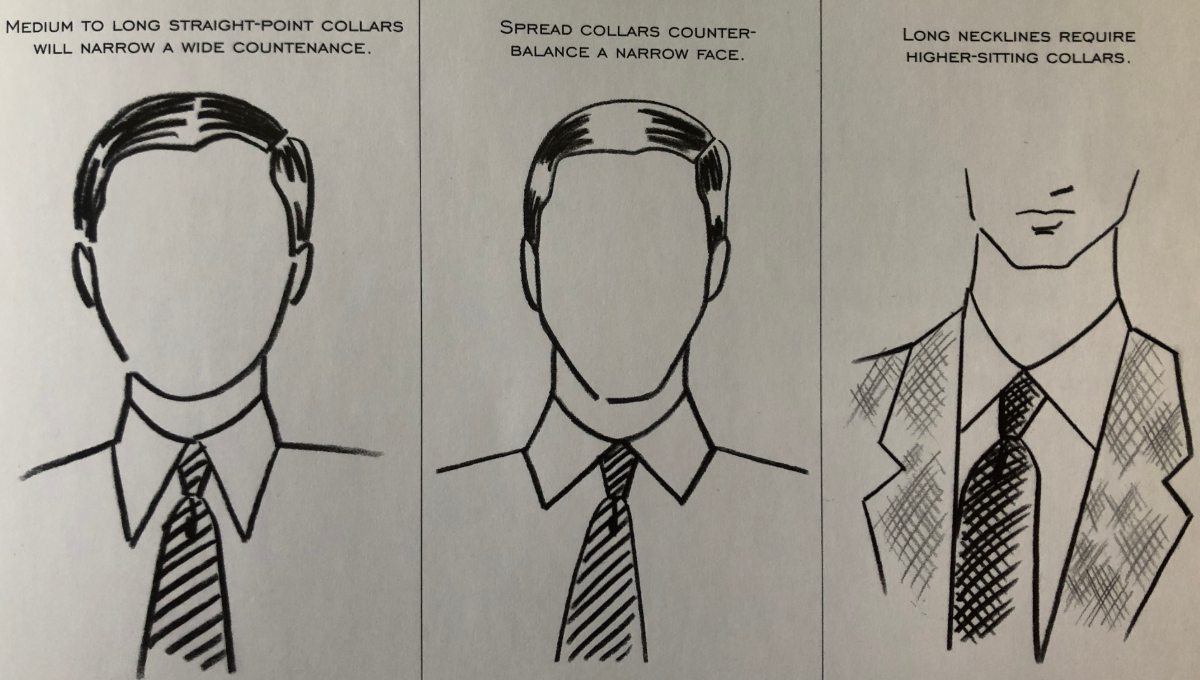 The best-looking shirt collars balance the wearer’s face shape. Men with more length than width in their faces should choose collars on the wider end of the spectrum. This collar width will balance their faces’ length, whereas a narrower spread will accentuate that length and make them appear lanky and out of balance.
The best-looking shirt collars balance the wearer’s face shape. Men with more length than width in their faces should choose collars on the wider end of the spectrum. This collar width will balance their faces’ length, whereas a narrower spread will accentuate that length and make them appear lanky and out of balance.
The opposite is true for men with more width than length in their faces, or who have round or square faces. These men should opt for narrower spreads to not widen their faces unnecessarily.
Anatomy Of A Shirt Collar
 We rarely discuss any collar details other than spread with clients unless they’re very particular about the design. There is more that goes into a custom shirt collar than a neck measurement and the spread that looks best. Below are the other considerations we make – often behind the scenes – when determining your shirt collar:
We rarely discuss any collar details other than spread with clients unless they’re very particular about the design. There is more that goes into a custom shirt collar than a neck measurement and the spread that looks best. Below are the other considerations we make – often behind the scenes – when determining your shirt collar:
Points: The parts of the collar that surround the collar button. With the collar buttoned, the bottoms of the points will make contact with your clavicle area. The length of the collar point itself is a way to balance the wearer’s frame, and also lend casualness or dressiness to a shirt. Note that wider spread collars require additional length so they sit properly when buttoned.
Spread: The distance between the bottoms of the collar points. The menswear industry uses many different terms to describe the looks of different spreads. “Point” collars typically have points that are close together. The term “spread collar” refers to anything with a medium-to-large degree of spread. “Cutaway” or “extreme cutaway” are terms you’ll see that refer to spreads around the 180-degree area: these are highly stylized and fashion-forward.
Simply think of collar spread as existing on a continuum; nearly-closed collars are on one end, and wide-open collars are on the other. Collars simply have a degree of spread, not arbitrary names to indicate a level of spread.
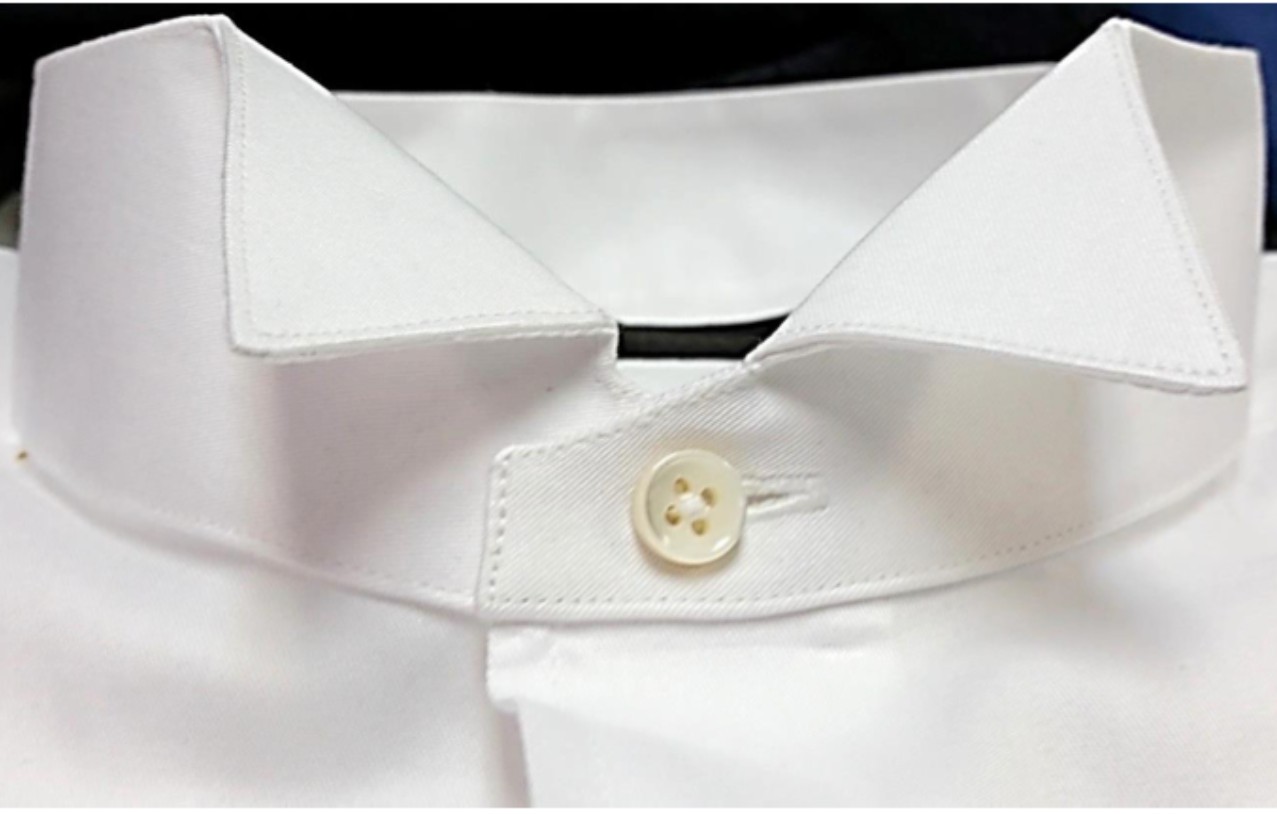 Tie Space: Distance between the collar points’ tops. What spread is to the bottoms of collar points, tie space is to the tops of collar points. Do you wear ties? If so, do you prefer larger or smaller knots? Adjusting the width of your tie space is key to accommodating the knots you like while balancing your face shape.
Tie Space: Distance between the collar points’ tops. What spread is to the bottoms of collar points, tie space is to the tops of collar points. Do you wear ties? If so, do you prefer larger or smaller knots? Adjusting the width of your tie space is key to accommodating the knots you like while balancing your face shape.
Band: The part of the collar whose inside makes direct contact with your neck. The height of the front band is adjustable, again to balance the wearer’s face shape. If you have a long-ish neck, a higher band will make it appear less so. Conversely, shorter necks need shorter bands so they don’t disappear under the collar.
Leaf: The part of the collar that’s folded over and would cover a tie if you wore one. The back of a collar’s height is adjustable like the front bands.
Cuffs
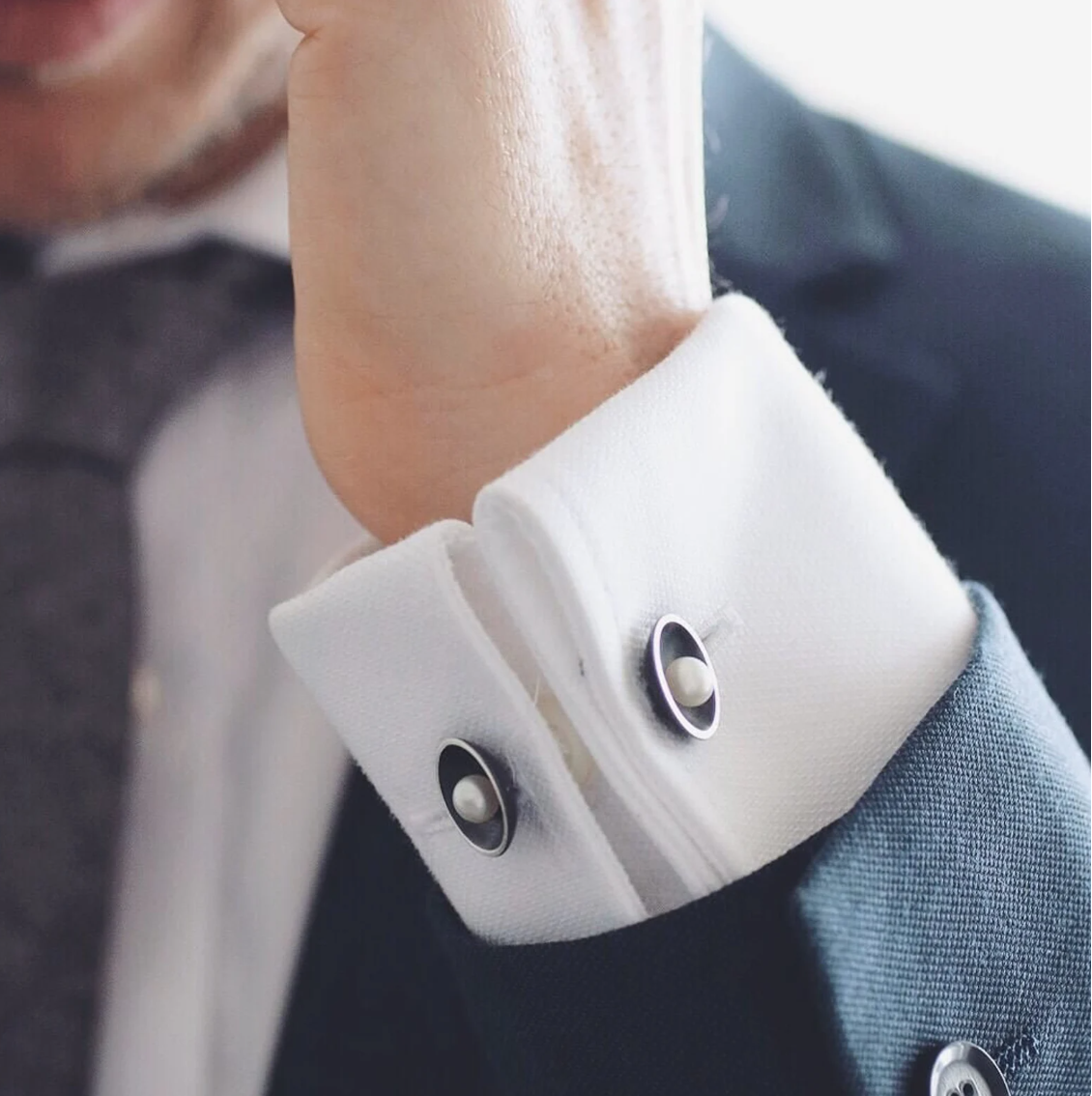 Shirt cuffs are similar to collars in that both comprise small percentages of the physical shirt, but have enormous visual impact. In terms of conveying the message we wish to send, our hands do much of the work. We all talk with our hands to a certain extent.
Shirt cuffs are similar to collars in that both comprise small percentages of the physical shirt, but have enormous visual impact. In terms of conveying the message we wish to send, our hands do much of the work. We all talk with our hands to a certain extent.
We use our hands a lot, and they receive lots of attention as a result.
Cuffs also play a large role in determining a shirt’s level of dressiness, and the extent to which a cuff shows from a jacket sleeve comprises a crucial visual balance component of the tailored ensemble. It’s important to pick the right cuff style.
We can divide cuffs into two categories: barrel cuffs and French cuffs – “double cuffs” for any Anglophile readers. French cuffs take cufflinks to fasten, barrel cuffs use buttons sewn to them to fasten. There are dozens of shapes for shirt cuffs, and you can even specify how wide you’d like them to be. We often make the cuff on one wrist wider than the other to accommodate a man’s watch, a detail that doesn’t exist in stock-sized shirts.
Barrel Cuff – Various Shapes & Sizes
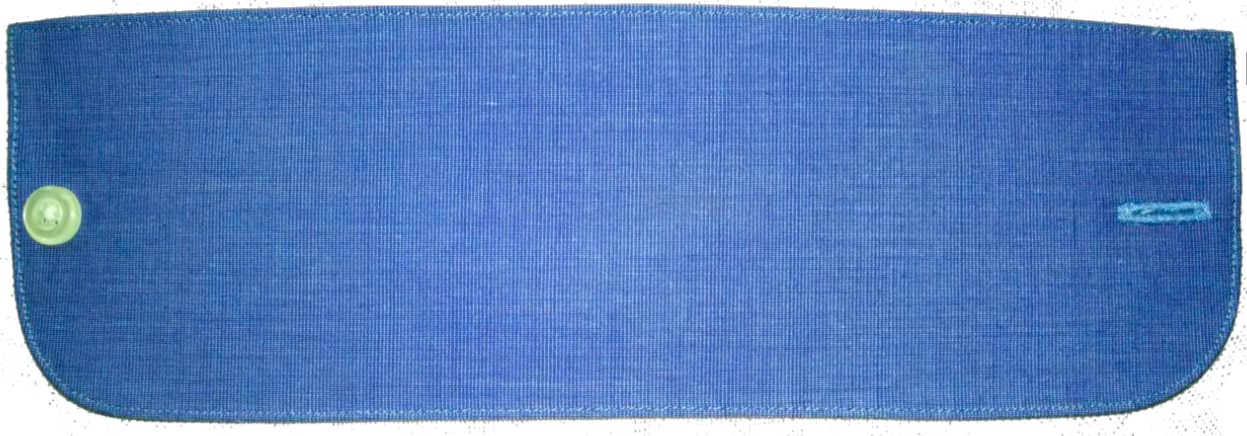 Barrel cuffs are so named because they resemble the shape of a barrel when fastened on your wrist. They use sewn-on buttons to fasten, and as such do not require cufflinks.
Barrel cuffs are so named because they resemble the shape of a barrel when fastened on your wrist. They use sewn-on buttons to fasten, and as such do not require cufflinks.
Most RTW shirts have adjustable, rounded barrel cuffs. This makes sense since the style is inoffensive and appropriate for any less-than-semiformal setting, but it only represents a fraction of the possibilities.
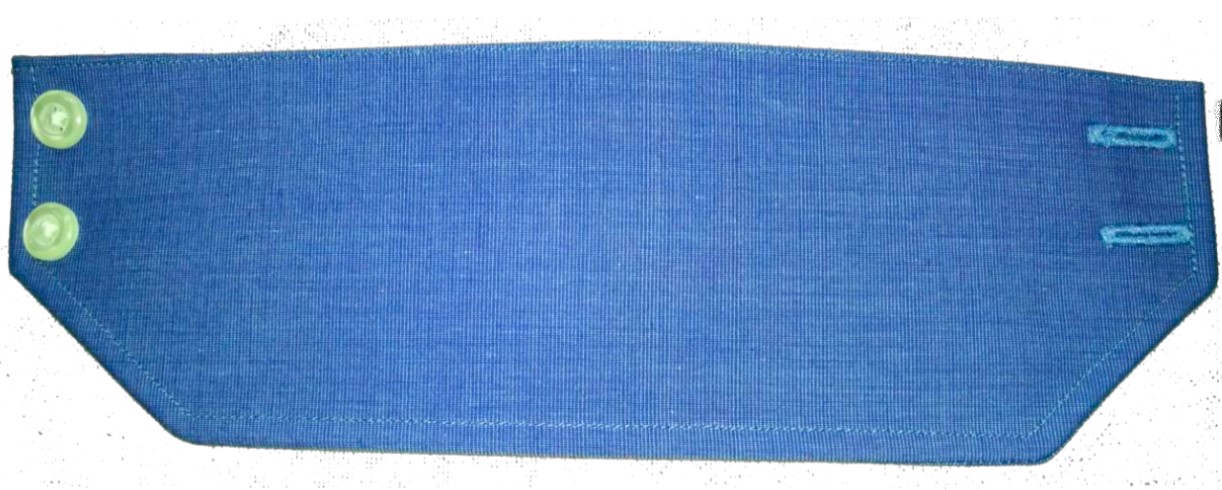 In the custom shirt world, barrel cuffs are available in plenty of shapes – rounded, angled, curved, straight, you name it. It’s standard to put either one or two buttons on a barrel cuff, but on a two-button cuff, the two buttons are spaced vertically, not horizontally as you commonly see on RTW shirts. This is done to allow for the varying wrist sizes that might eventually occupy that cuff.
In the custom shirt world, barrel cuffs are available in plenty of shapes – rounded, angled, curved, straight, you name it. It’s standard to put either one or two buttons on a barrel cuff, but on a two-button cuff, the two buttons are spaced vertically, not horizontally as you commonly see on RTW shirts. This is done to allow for the varying wrist sizes that might eventually occupy that cuff.
The cuff is named for how many buttons there are to be buttoned, not how many are sewn onto the cuff. It is worth noting that two-button cuffs are dressier than their simpler one-button counterparts.
French Cuffs
If a shirt requires cufflinks, it’s likely a French cuff shirt. Still, not every shirt that needs links is a French cuff one.
 “French cuff” is a North American term for what the British call a “double cuff.” The cuff is cut twice as long as a regular one, folded back over itself – “doubled,” even – and fastened with a cufflink. Like custom barrel cuffs, they’re available in a range of shapes with sides cut away, corners angled off, and more.
“French cuff” is a North American term for what the British call a “double cuff.” The cuff is cut twice as long as a regular one, folded back over itself – “doubled,” even – and fastened with a cufflink. Like custom barrel cuffs, they’re available in a range of shapes with sides cut away, corners angled off, and more.
Much like there had to be a World War I for there to have been a World War II, the existence of a double cuff means that a “single cuff” exists. Sometimes referred to as a “link cuff,” a single cuff shirt takes cufflinks but lacks the fold back over itself like a French cuff shirt. Typically reserved for full formal shirts (white tie), we have some clients who like them for their day-to-day choice. Anytime you incorporate a piece of jewelry like cufflinks, you get another opportunity to work in a piece of your personality.
Other Cuffs & Custom Details
In the custom world, there are specialty cuffs that you won’t find off the rack. Some are:
Cocktail Cuff
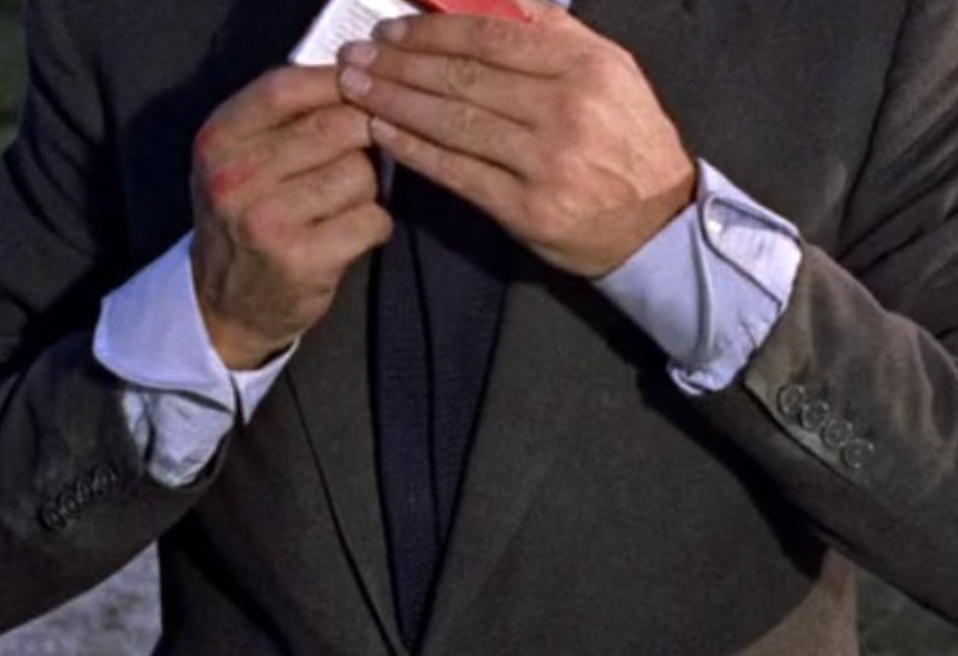 Worn by Sean Connery’s 007, this makes a great substitute for a French cuff. This cuff closes with 2 buttons on the inside layer of a double cuff and then folds back over itself with a unique cutaway on the outer layer.
Worn by Sean Connery’s 007, this makes a great substitute for a French cuff. This cuff closes with 2 buttons on the inside layer of a double cuff and then folds back over itself with a unique cutaway on the outer layer.
Tab Cuff
Like a single cuff, but fastened with a tab of fabric and a button instead of a cufflink.
Custom Cuff Detailing
Custom shirt cuff choices aren’t limited to style and shape. Cuff width can be adjusted to better frame larger or smaller hands. Buttonhole stitch colors can be changed, and contrast material can even be used. This can be for the entire cuff or just a trim, like piping or a contrasted inside.
What Cuffs To Wear, & When
An easy rule of thumb to remember is that French cuffs are dressier than barrel cuffs. We admit this isn’t true in every case – a simple, white broadcloth barrel cuff shirt worn with a suit will be “dressier” than a bold plaid French cuff shirt worn with jeans – but it’s true often enough to allow here.
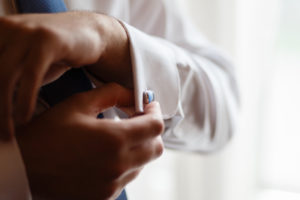
Barrel cuffs are found on a massive range of shirts. They’re casual enough to put on an untucked chambray shirt with shorts. They’re dressy enough to put on a royal oxford you’d wear with a suit and tie. Versatility is their strong suit.
Most cufflinks fall under the category of jewelry, which is why shirts that require them are considered dressier. French cuff shirts work beautifully with suits and are required for black-tie affairs. When paired with dress denim and a well-tailored sport coat, a French cuff shirt makes a dressy, “I took the extra step” statement.
Custom Styling Options
If we compare shirt design to building a home, then the fabric is the same as the foundation. Collar and cuffs are your kitchen and bathrooms. For this discussion, “styling” would be synonymous with paint color, molding, and other finishing touches.
We’ll focus on three common styling components here: monograms, contrast fabrics, and button(hole) orientation. Keep in mind that we can create any detail you see in the pictures here. Also, what you see here is only a fraction of the capabilities. Contact us anytime to learn more.
Monograms on Men’s Shirts
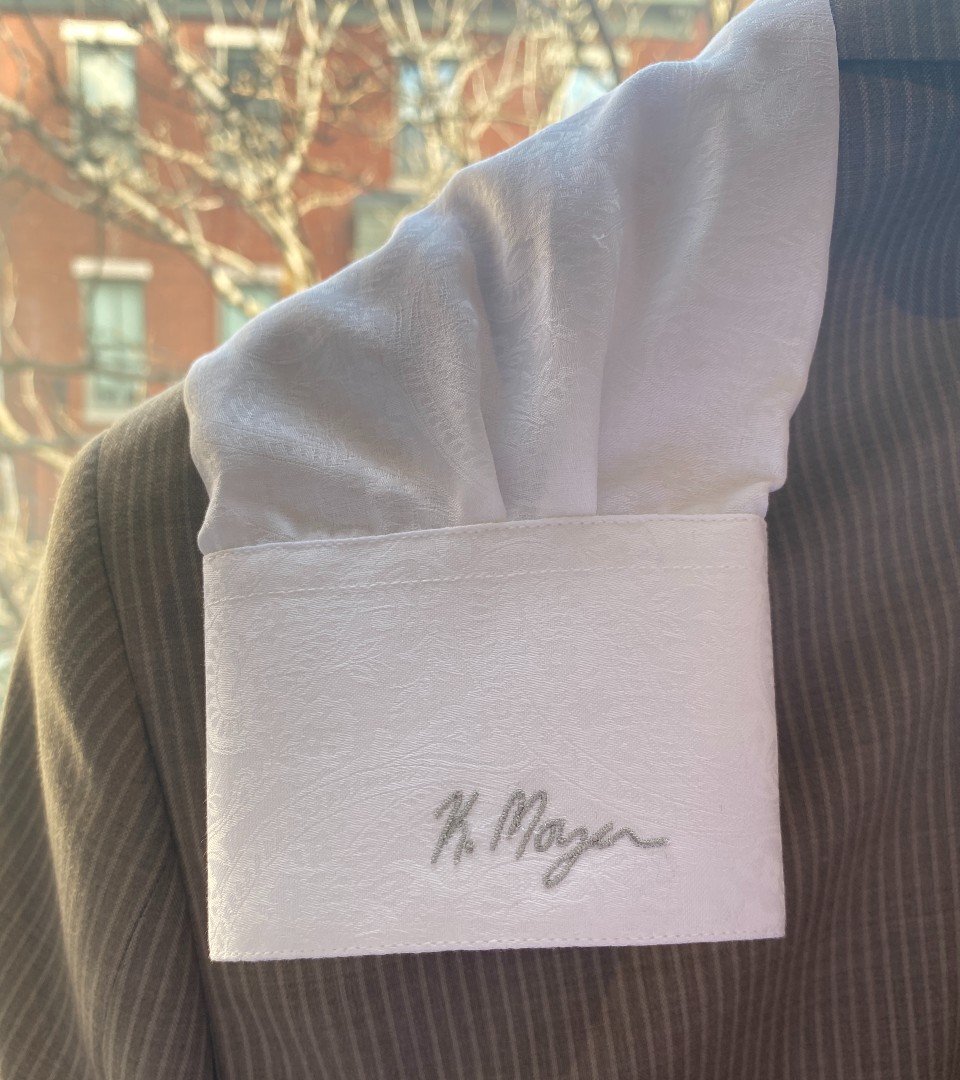 Monograms were originally placed on men’s dress shirts for identification when taking them for cleaning. Traditionally, men would only wear a white or blue dress shirt which could easily get mixed up when taken to the dry cleaner. A monogram on the shirt ensured it found its way back to its proper owner.
Monograms were originally placed on men’s dress shirts for identification when taking them for cleaning. Traditionally, men would only wear a white or blue dress shirt which could easily get mixed up when taken to the dry cleaner. A monogram on the shirt ensured it found its way back to its proper owner.
Lots of our clients opt for custom monograms, which is where we take your handwritten signature or initials and use it in place of a default font. Like a standard monogram, you can select the color(s) of a custom monogram, as well as where it’ll be placed on the shirt. You can even get your company logo monogrammed into a shirt.
Contrast Fabrics
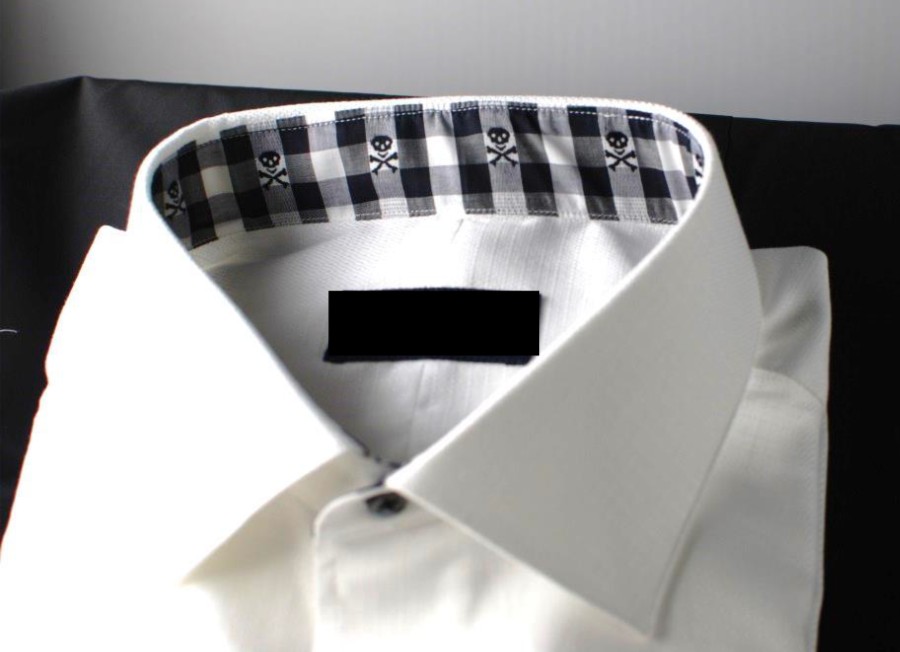
One way to amp up the design of a custom shirt is to use contrasting fabrics in key areas. Ready-to-wear shirts are sometimes made with insides of collars and cuffs different from the rest of the shirt. This is fun, but you’re limited to what a buying team wanted to see for a given collection. When you can select your own, it provides an avenue for expression that can’t be rivaled.
Button(hole) Orientation
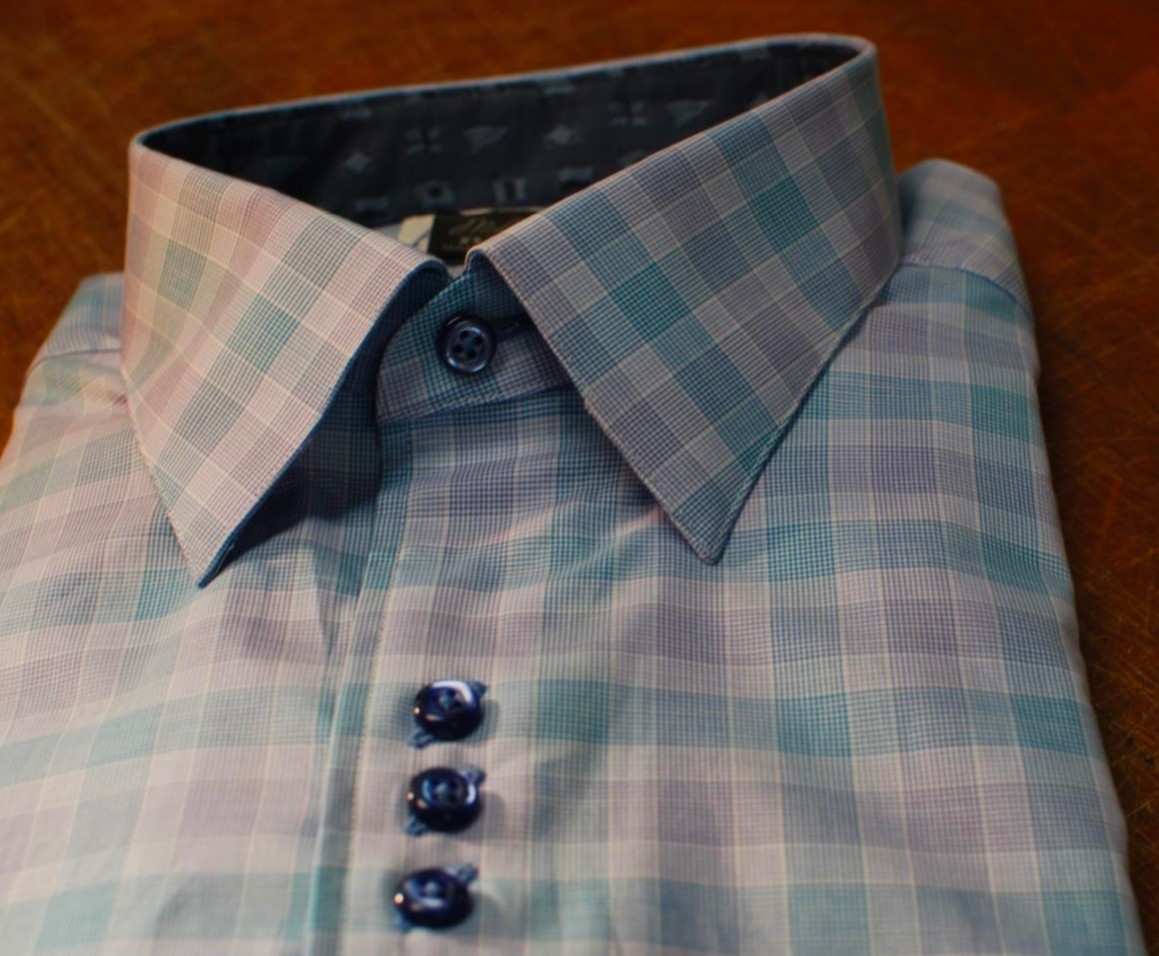 In addition to picking out the buttons themselves, you can decide how the buttons will be arranged on the shirt. A single row of evenly-spaced buttons on a front placket is standard, but custom shirts offer the option to double- or even triple-stack your buttons. A lot of our clients will even mix orientations, so take a look at the pictures for inspiration.
In addition to picking out the buttons themselves, you can decide how the buttons will be arranged on the shirt. A single row of evenly-spaced buttons on a front placket is standard, but custom shirts offer the option to double- or even triple-stack your buttons. A lot of our clients will even mix orientations, so take a look at the pictures for inspiration.
The orientation of the buttonholes themselves can also be adjusted. Buttonholes are typically set at a vertical 180° angle: a straight up-and-down line. A quiet way to add to your shirt’s style is to angle those buttonholes at 45° or even 90° angles. Changing the buttonhole thread color will draw more attention to it. Leaving it “self-colored” will make sure the angling is noticed only by the keenest of eyes.
Conclusion
We hope this entry gets you as excited about shirts as we are! As always, contact us with any questions or if you are interested in starting the custom process.
